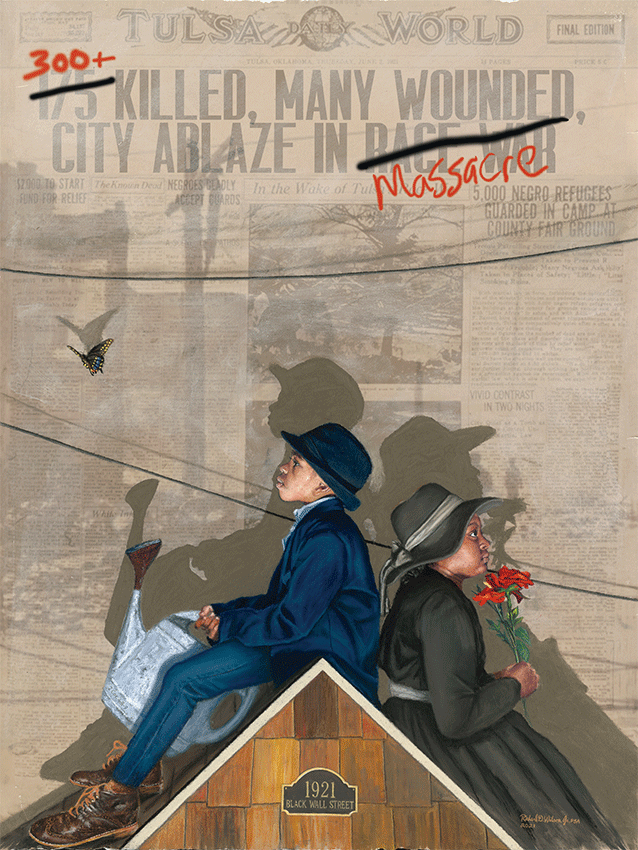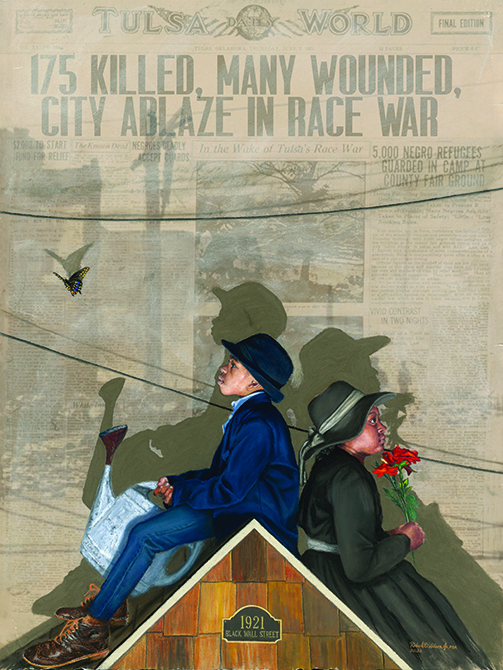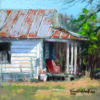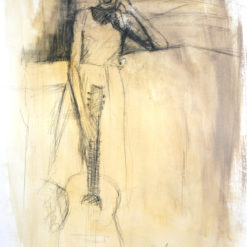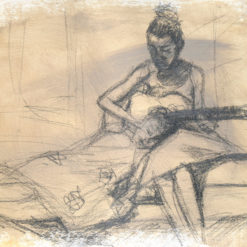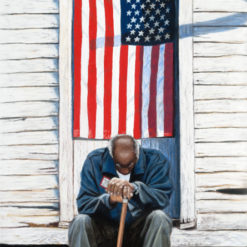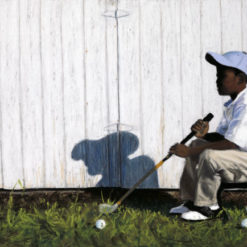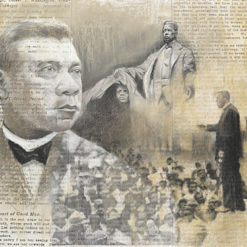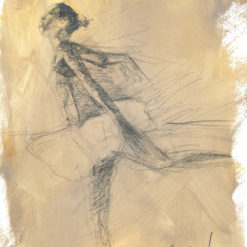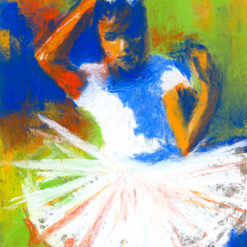1921 Black Wall Street
$65.00 – $6,500.00
1921 Black Wall Street is a poignant and deeply symbolic painting by Richard D. Wilson, Jr., an internationally acclaimed artist celebrated for his evocative and historically rich works. The painting highlights the tragic events of the Tulsa Race Massacre, one of the most devastating incidents of racial violence in American history. Between May 31 and June 1, 1921, the thriving Greenwood District, known as Black Wall Street, was destroyed in a white supremacist attack that left over 300 Black men, women, and children dead, thousands displaced, and countless homes and businesses reduced to ashes.
This piece is part of Wilson’s Shadow Series, in which young individuals are depicted standing in the shadow of trailblazers or pivotal historical moments. Each painting in the series incorporates layered symbolism, revealing often untaught or overlooked truths about the figures or events they portray.
In 1921 Black Wall Street, Wilson depicts a young boy and girl sitting on a rooftop, symbolizing the hope and potential of future generations. In the background is a historical newspaper headline from the Tulsa World, originally stating, “175 KILLED, MANY WOUNDED, CITY ABLAZE IN RACE WAR.” Wilson crosses out “175” and replaces it with “300+” to reflect the discovery of a mass grave that revealed the true death toll. He also replaces “RACE WAR” with “Massacre” to accurately characterize the event as an organized and deliberate act of violence against the Black community.
The painting is filled with symbolic elements that add depth to its narrative:
- The Telephone Lines: Represent the connection to the past, emphasizing that history continues to shape the present.
- The Dovetail Butterfly: Oklahoma’s state butterfly, symbolizing spiritual rebirth and transformation.
- The Red Rose: Held by the young girl, representing Oklahoma’s state flower and symbolizing beauty and resilience amid tragedy.
- The Watering Can: Held by the boy, symbolizing the nurturing and growth of future generations. The can is inscribed with scripture from 2 Corinthians 4:8-9:
“We are hard pressed on every side, but not crushed; perplexed, but not in despair; persecuted, but not abandoned; struck down, but not destroyed.” This verse serves as a reminder of the resilience of Black communities in the face of unspeakable horrors.
Wilson uses the children in the painting to convey hope and possibility. They represent the next generation, holding the blueprint to rebuild the unity, strength, and success that defined Greenwood. The boy’s watering can symbolizes the importance of teaching and uplifting the youth to recreate thriving communities.
1921 Black Wall Street is more than a reflection on a singular tragic event; it is a tribute to resilience, a call to remember the past, and a vision for the future. Through its intricate symbolism and historical significance, Wilson’s painting serves as a powerful reminder of the strength of a people and the importance of reclaiming and preserving history.


